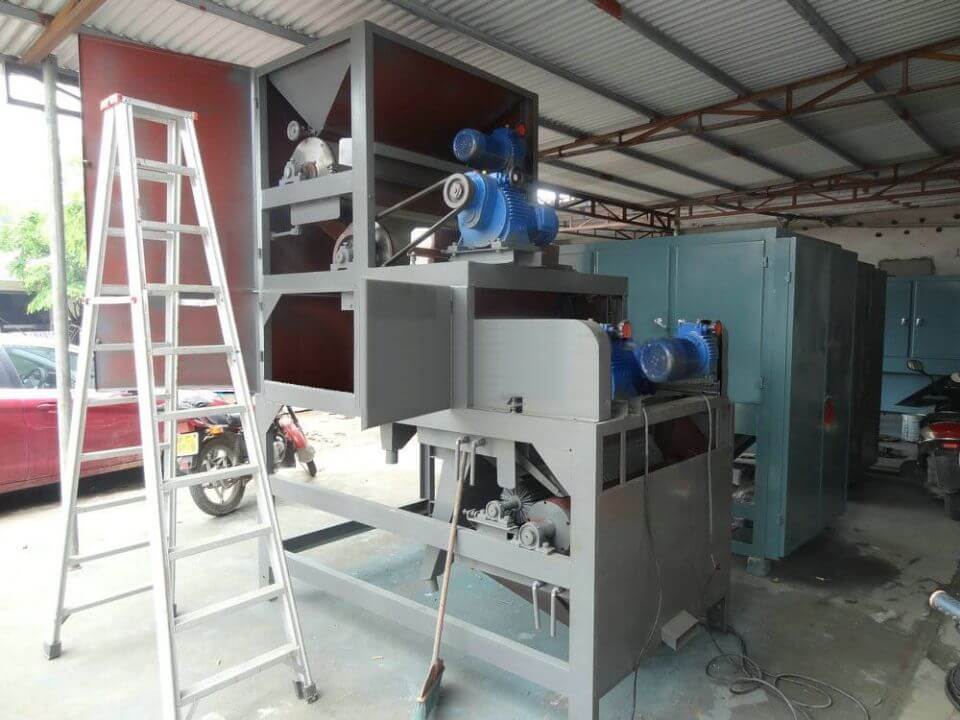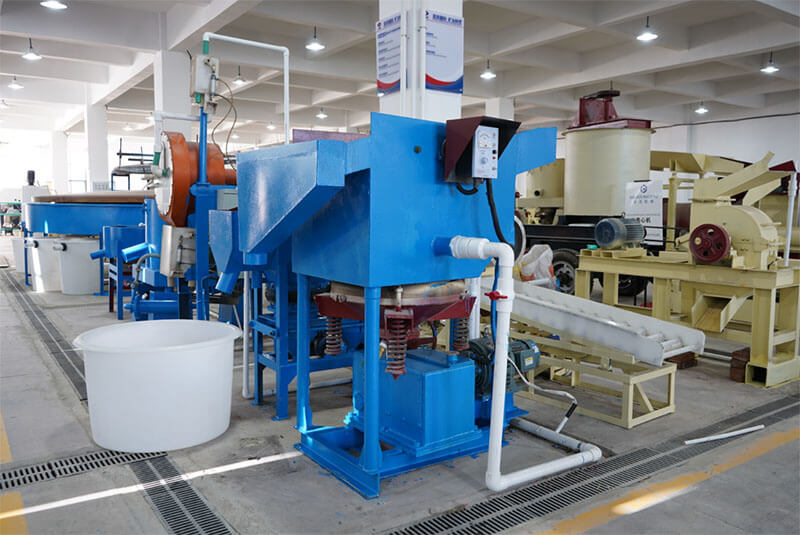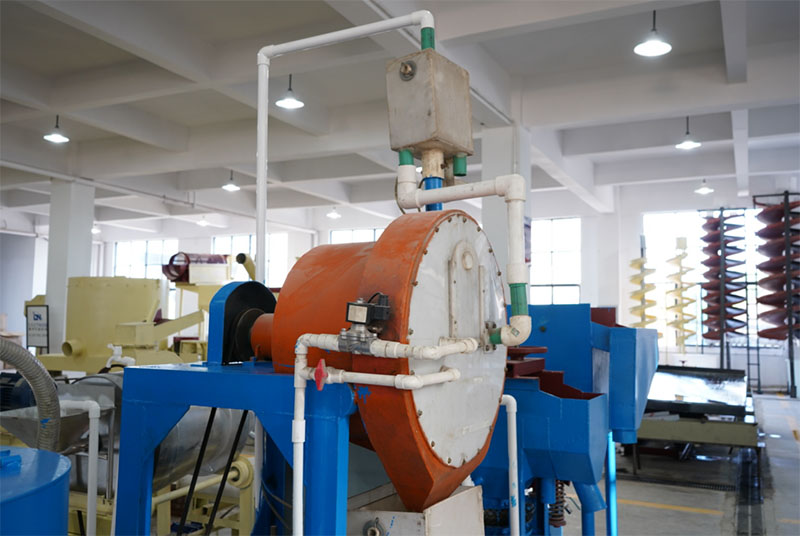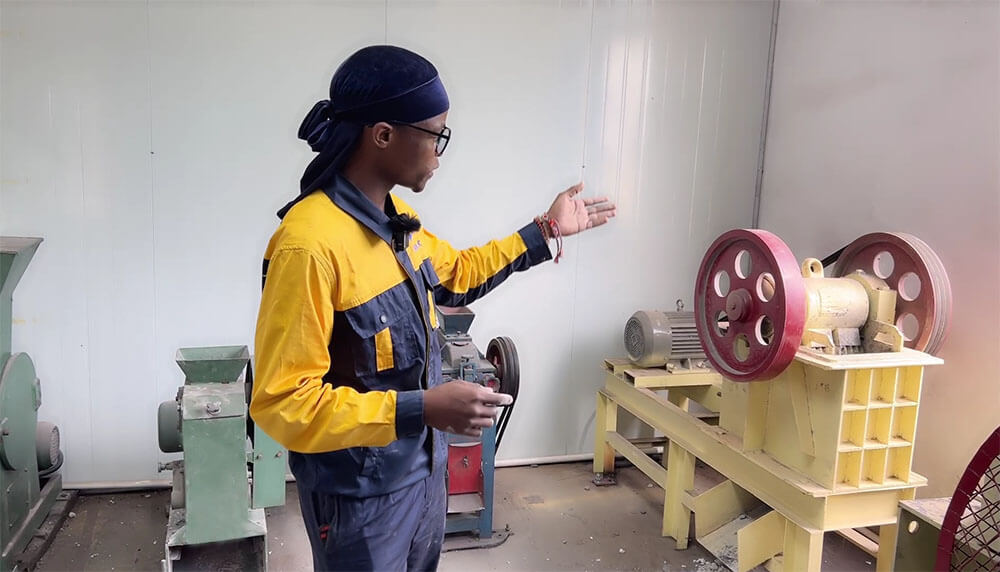The laboratory single-cell flotation machine is a laboratory experimental beneficiation equipment. This equipment has wide applications in metallurgy, building materials, chemicals, and other industrial laboratories for small amounts of the minerals flotation process. The single-cell flotation machine is also suitable for separating non-ferrous metals, black metals, coal, etc. It has three types of spindles with a compact and corrosion-resistant overall appearance, beautiful design, and easy operation.
Application and Structure
The XFD series lab single-cell flotation machine is suitable for small amounts of sample ore flotation separation in industrial laboratories such as geology, metallurgy, building materials, and chemical engineering.
Structure
The XFD series flotation machine consists of the following main components.
(1) Machine base (2) Support plate (3) Tank body (4) Mixing part (5) Scraper part (6) Spindle section (7) Guard (8) Motor (9) Flow meter (10) Control switch (11) scraper switch
First, screw all the components to the body, and make sure the spindle rotates clockwise. The different belt grooves on the spindle will produce three different speeds. Through the motor drive the pulley and rotate the scraper. The height of the scraper is adjustable.
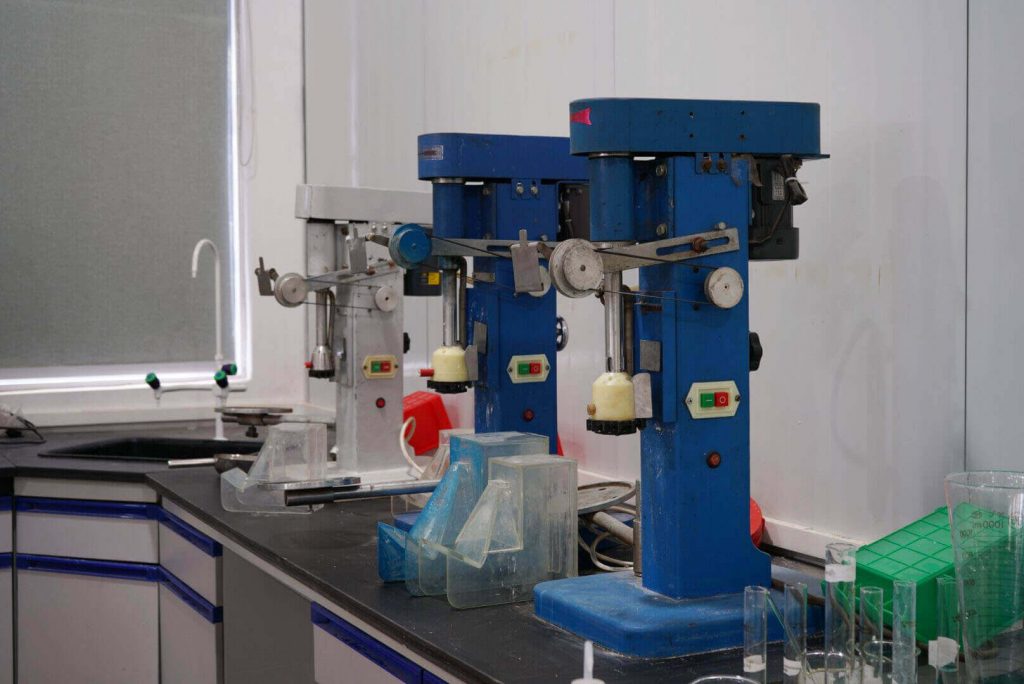
Operation Sequence
- Connect the power supply according to regulations.
- Machine test
Check the direction of spindle rotation, and make sure it rotates clockwise. If it is not, change the power phase sequence to make the motor rotate clockwise before starting to work.
- First, pour the mixture of ore sample and water into the tank, start the motor, the main shaft rotates, the impeller in the tank will start mixing.
- Then open the valve to inflate, and after adding the required agent, it forms the lather.
- Turn on the scraper motor switch to rotate the scraper, then it scrapt the foam out of the discharge port, and the material box on the workbench to catch the foam. After the foam treatment, we will get the mineral concentrate.
Operation and Maintenance
- It is necessary to check for any blockages in the groove, whether the impeller is loose, the matching of the belt, and the connection of screws before starting work.
- Add lubricating oil to each rotating joint, and change the lubricating grease at least once every three months at the bearing. (Lubricating grease requires a melting point higher than or equal to 100 degrees)
- After each use, clean the tank and impeller and wipe them. Keep the machine durable, tidy, and aesthetically pleasing.
- When replacing the impeller stator, first unscrew the impeller, then loosen the fastening screws between the stator and the lower body, and replace it with a new impeller and stator.
- When moving the flotation machine, the focus should be on the machine body, not on any components, to avoid damage.
- The working temperature of the flotation tank is between 15-50 degrees.
The working steps of the XFD single-cell flotation machine
- Mix ore or other solid particle materials with reagents evenly to form a mixture.
- Put the mixture into the lab XFD single-cell flotation machine tank, and add a certain amount of water or other appropriate solution.
- Open the air valve inside the device and spray the gas out of the breathable tube. Gas forms bubbles in the machine slot, and the bubbles adhere to the surface of the particles.
- Bubbles generate buoyancy, floating minerals, and other impurities attached to the particle surface above the liquid surface to form a foam layer.
- Minerals and other impurities that do not float at the bottom are deposited at the bottom of the machine slot.
- Based on the different buoyancy and adhesion abilities of minerals and impurities, the laboratory XFD single-cell flotation machine will separate different valuable minerals.
- Adjusting parameters such as bubble flow rate, reagent addition amount, and rotation speed will simulate the working principle of large-scale flotation equipment and predict the flotation effect of ore in actual lab mineral experiment.
The characteristics of a single-cell flotation machine
(1) Large suction capacity, low power consumption, and self-contained flotation circuit, no need for any auxiliary lab mining equipment.
(2) Horizontal configuration of the device facilitates process changes. The slurry circulation is reasonable, and it will reduce the sedimentation of coarse sand. This machine is equipped with a pulp surface automatic control device, which is easy to adjust.
(3) The device has a frequency modulation function, and we can adjust the frequency according to actual needs.
(4) The flotation cell is made of organic glass material. It has acid and alkali resistance ability, and we can observe the flotation process.
- The main shaft is made of stainless steel material, which is acid and corrosion-resistant. The impeller cover plate is made of medium-hard acid-resistant rubber.
- The material of the flotation cell is an organic glass cell.
- The scraper belt is made of cowhide.
- This machine has the advantages of delicate work, clean appearance, and even spray painting.
JXSC lab mineral processing equipment manufacturer has more than 38 years of experience in mining processing. We provide various lab mining equipment including gravity-separating equipment for processing minerals such as gold, tin, tungsten, lead, zinc, tantalum, niobium, iron, manganese, silver, titanium-iron, etc. Lab machines include laboratory jaw crusher, hammer crusher, roller crusher, grinding equipment, lab gravity separator, screening, washing equipment, etc. Welcome to consult!

